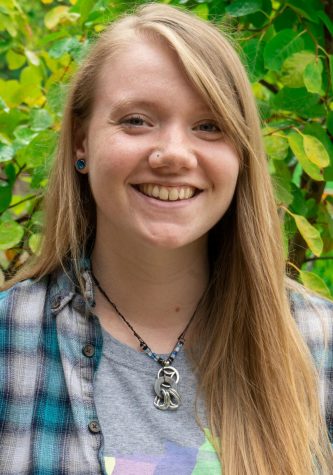News Briefs
Oct 14, 2019
Synagogue project to be featured in Muskegon museum
A project aiming to record oral histories of synagogue members of the B’nai Israel Synagogue in Muskegon will be receiving a museum exhibition in fall 2020. Associate professor of integrative studies and member of B’nai Israel Marilyn Preston began the project and received help from Grand Valley State University student Joel Hill.
“I developed a plan with a class in mind to do oral histories. Students in the class developed research guides and decided what questions to ask, with guidance from the rabbi and his wife,” Preston said. “We centered our interviews around what it means to them to be Jewish and how the temple has shaped their experience.”
Hill, an integrative studies major, took Preston’s religion class to learn about Judaism and became more interested in the religion.
“They made me feel like a part of the family,” Hill said. “It was part of our class to come and do these interviews, and then I just continued to worship there.”
Hill received a Student Summer Scholar grant from the Office of Undergraduate Research and Scholarship and Preston received a grant from GVSU’s Kutsche Office of Local History and Center for Scholarly and Creative Excellence.
The project will be displayed at the Lakeshore Museum Center in Muskegon from September 2020 to April 2021.
GV faculty, student conduct anthropology research
A GVSU anthropology faculty member and student have conducted research on skulls to more accurately determine the age of the person at death.
Anthropology professor Gwyn Madden worked with McNair Scholar and anthropology major Alyssa Piechocki to implement these research techniques. While the age of skulls is normally determined based on enamel erosion, Madden and Piechocki used a more accurate technique that relies on the tooth’s pulp chamber. Since this chamber fills up with age and remains more intact than enamel, ages can be pinpointed more exactly.
In order to better study this, Madden and Piechocki traveled to Thailand to view skeleton collections. The process included X-raying teeth, measuring the pulp chamber and using an equation to determine the results.
Piechocki said the experience impacted her interest in anthropology and gave her a deeper respect for the skulls they examined.
“They all have their own stories,” Piechocki said. “You can tell so much from a skeleton without words and it’s kind of like putting a puzzle together.”


























